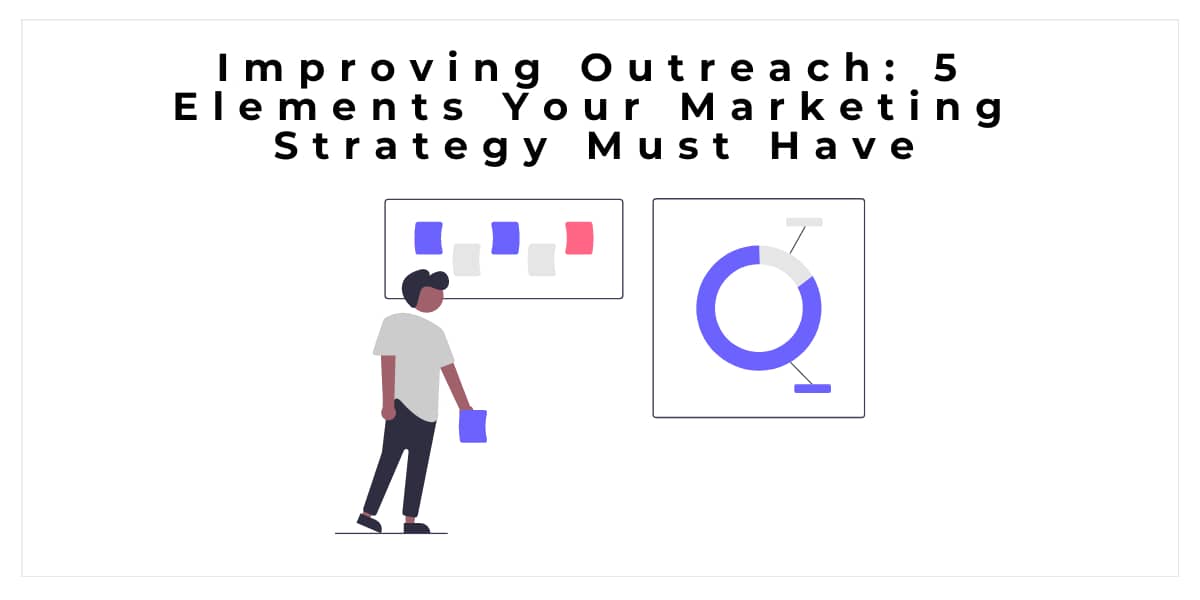Outreach is one of the most essential elements of any marketing strategy. It allows you to extend your reach, build relationships, and grow your customer base more effectively than relying solely on traditional inbound tactics. But while it may seem straightforward on the surface, many complex components make up a successful outreach campaign. Today we'll talk about the five key elements you should consider if you want to increase the effectiveness of your campaigns and maximize your return from this critical part of your overall marketing strategy.
Identify Your Target Audience – Understand who you want to reach and how to reach them best:
Knowing your target audience should be the cornerstone of any marketing strategy. Before you attempt to reach potential customers, it is essential to understand the needs and interests of your ideal customer. Otherwise, you won't know what kind of message or product would appeal to them. This involves researching your target market's demographic, psychographic, and behavioral characteristics to craft a personalized message that resonates with their lifestyle. Additionally, audiences interact best with brands on social media platforms if they are well-tailored to their preferences. A comprehensive understanding of your end consumer can be the difference between success and failure in generating campaign results.
Craft Engaging Content – Create content that is interesting and relevant to your audience:
Creating content that is both engaging and relevant to your audience is essential when it comes to digital marketing success. It helps to build trust and loyalty within your customer base and cultivate relationships with potential customers. To craft content that resonates with your audience, identify their needs and interests. Then, tailor posts accordingly. Use visuals, stories, humor, and current events to make the content more interesting and capture the reader's attention. Develop a writing style that reflects your brand's personality and remains consistent across all channels. Finally, consider what other material your readers are consuming online so that you can provide content that complements theirs. These steps will help ensure you have engaging content for customers to enjoy!
Utilize Social Media Platforms – Use social media as a tool for increasing brand awareness and engaging with potential customers:
Social media platforms are an invaluable tool for businesses. They allow companies to promote their brand and connect with potential customers in a targeted, cost-effective way. When utilized correctly, social media channels can drive more organic traffic to company websites, build trust among followers and grow the customer base in the long run. When crafting social media posts, businesses should strive to create relevant, engaging, and shareable content – focusing on what’s of value to their followers rather than promoting their own products or services. Using tools like polls and surveys enables brands to gain valuable insights into audience preferences, which can be used to craft customized marketing campaigns that meet customers' needs.
Invest in Paid Advertising – Consider using paid advertising techniques such as search engine marketing, display ads, or retargeting campaigns:
Paid advertising can be a critical aspect of any successful digital marketing strategy. Investing in paid ads allows you to promote your products and services to targeted audiences across various channels. Using paid channels such as search engine marketing, display ads, and retargeting campaigns can help you acquire new customers, drive traffic to your website, increase leads and sales volume, and boost brand awareness. By strategically planning a paid ad campaign, you can optimize its performance for optimal results. Through detailed analysis of past campaigns and regular testing of the current one, you can ensure that your ad spend utilized efficiently and yields the highest return on investment possible.
Measure Your Results – Track the performance of your campaign to ensure it is delivering results:
Tracking the performance of a marketing campaign is essential for ensuring that it delivers results. Measuring and monitoring specific quantitative metrics like views, clicks, conversions, and sales is necessary to provide the best results from campaigns and resources. By monitoring these key indicators, it's possible to understand how campaigns have impacted customer perspective, buying behavior, acquisition costs, and overall ROI. You can gain such insight and more without much ado using online tools like Constant Contact, whose pricing is affordable. This process can also reveal when tactics need adjustment to get better results from each campaign you produce, allowing you to move forward when planning future initiatives confidently.
In conclusion, creating a successful marketing campaign requires careful planning and consideration of your key objectives. Identify your target audience and craft engaging content tailored to their needs. Utilize the right digital platforms, including organic and paid social media, search engine marketing, display ads, or retargeting campaigns. Consistently measure all channels' performance to ensure they deliver the desired results. With the right approach, you can ensure that your campaign reaches its full potential while ensuring ROI.








